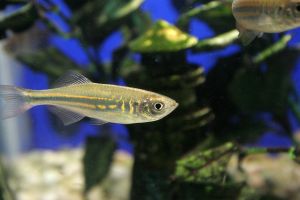Highly controversial, learn about this fascinating equipment.
This article is contributed by Aquarium Advice member loganj
All footnotes in the article below refer to figures and pages contained in “Aquatic Systems Engineering: Devices and How They Function” by P.R. Escobal. This book is an excellent resource and I would recommend it to anyone.
The UV sterilizer is a controversial piece of equipment, especially in reef tanks where diversity of life is considered an important factor. I haven’t been able to find any conclusive evidence that reef organisms such as amphipods and copepods will suffer a significant decrease in population when UV sterilization is used. Of course, I didn’t find any information claiming to prove they would not either. Notwithstanding this controversy, it is a useful tool for controlling micro-organisms and algae when properly implemented. WHEN PROPERLY IMPLEMENTED is the key phrase here. Often, the use of UV sterilization produces less than optimal, if any, results due to improper sizing and flow rates. Obviously, one does not need a 64 watt sterilizer for a 10 gallon tank while an 8 watt unit will not produce the desired results in a 180 gallon tank. But there is much more to it than just bulb wattage.
The function of the UV sterilizer is a combination of flow, diameter, and bulb wattage. These three factors combine to produce the zap dose. While I do not want to get into the mathematical equations here, let it suffice to say that the zap dose is the UV energy required to kill a given organism. The dose varies depending on the organism. For instance, Streptococcus bacteria needs a zap dose of approximately 9000, algae needs about 22,000, while some viruses need a whopping 440,000 to ensure total eradication. A small UV unit with a high flow rate will not effectively control most of the harmful organisms in the aquarium. In fact, to insure proper zap dosage with the recommended turnover of 2x tank size per day, sterilizers less than 25 watts are not practical for tanks above 20 gallons. On the other hand, a properly sized unit need not be run 24 hours per day to achieve the desired results, thus increasing bulb life. For example, running the sterilizer for two 11-hour cycles every 24 hours will result in a 10% increase in bulb life – a substantial savings when one considers the price of replacement bulbs.
Why is the diameter of the unit important? Contact time: a three-inch sterilizer at a given flow rate will produce a longer contact time than a ¾ inch sterilizer at the same flow rate. Again, without getting into the mathematics, three inches is the optimal diameter for maximum contact time without a reduction in intensity. The UV light is diffused in water and loses intensity as it travels further from the bulb. This is why a 6-inch diameter unit would not be effective many of the organisms passing through the unit would be too far from the bulb to receive the required dosage. A three-inch, 25 watt unit is 55% more efficient than a two-inch model at the same flow rate. At 500 gallons per hour, the three-inch unit delivers a zap dose of 10,083 while the two-inch unit only delivers 6,512 (Tables 5.3 & 5.5, page 53,54). This is due to the increased contact time allowed by the larger diameter. However, most of the sterilizers available are offered in either ¾ inch or two inches. So, one concludes that the two-inch model is the more desirable choice.
Another factor in choosing the proper unit is flow rate. As mentioned before, the target is two turns per 24 hours. Obviously, the higher the wattage of the bulb, the higher the flow rate for a given dosage. In many cases, a low wattage unit is combined with a high flow rate which produces unsatisfactory results. For example, at 500 gph, a two-inch, 25 watt unit delivers a zap dose of 6,512 while a two-inch, 64 watt unit at the same flow rate delivers 18,406 (Table 5.3, page 53). Staphylococcus would be eliminated by both units while salmonella would pass through the smaller unit with little damage. The larger unit would effectively eliminate the salmonella which has a zap dose of 10,000. Recommendations for flow ratings will be made at the end of this article.
The last factor is bulb wattage. Choosing a sterilizer that will deliver the proper dosage at the required flow rate involves using the proper wattage. As shown above, the higher the wattage of the bulb, the higher the flow rate can be for a given dosage. This is determined by the size of the aquarium. A flow rating of 50 gph might be sufficient to achieve 99.99% sterilization of the tank volume for two turns every 24 hours for smaller tanks. For larger tanks, a higher flow rating will be needed to meet the two turns per day requirement and this will require a higher wattage bulb. But how to determine this?
Here is a fairly simple formula to determine what the flow rate needs to be for a tank of a given size. By changing the numbers in the equation, one can determine what size unit will be needed and how long it will need to run to achieve two turns per day. The formula is T = a(G/F) where:
T is the time required for 1 turnover of all the water in the tank.
a is the purity coefficient (insert 9.2 here – this is the coefficient for 99.99%)
G is the total volume of water in the tank
F is the flow rate through the sterilizer in gallons per hour
(Figure 5.13, page 55)
For example, a 125 gallon tank with a flow rate of 110 gph would require 10.45 hours per turn: 9.2 x 125/110 = 10.45 hours
In summary, one can see that improper sizing or flow will reduce the effectiveness of a UV sterilizer to unacceptable parameters – the bacteria will come out the other side unharmed. Here, I will offer some general, and fairly conservative, guidelines for sizing and flow rates for a two-inch diameter unit. This assumes a zap dose of 30,000 which should be sufficient for algae and all but the toughest bacteria and viruses. Ich parasites have a zap dose of about 100,000. The following flow rates should be reduced by about 60% if UV is being used to control an ich outbreak.
25 watt unit = 80 gph
30 watt unit = 125 gph
64 watt unit = 275 gph
(Figure 4.5, page 42)
While the above is hardly enough to provide exact information, it is more than suitable to determine the wattage and flow rates needed to achieve sterilization for most harmful organisms in a tank of a given size. It is my belief that many manufacturers overrate their units and I would caution the reader about accepting advertised flow rates/tank size information when shopping for a sterilizer. I also recommend the following book for anyone who wishes to obtain a better understanding of UV sterilizers and other equipment associated with aquariums, including skimmers, reactors, pumps, heaters, ozone sterilization, and fluidized bed filters. Aquatic Systems Engineering: Devices and How They Function by P.R. Escobal. It is my opinion that UV sterilization would be beneficial for any freshwater tank or for a saltwater fish-only tank. I also would not hesitate to use it on a FOWLR tank. On a reef tank, and this is just my opinion, I would be hesitant to use UV on a regular basis. I believe it would be useful to control occasional disease or algae outbreaks, though.
An Explanation of the Purity Coefficient
Written by: LoganJ
As you know, sterilized water is pumped back into the tank where it mixes with unsterilized water. After the first second or so of operation, at any given time, a certain percentage of water that has already been sterilized will pass through the unit again. This has no effect at all on the ratio of sterilized to unsterilized water in the tank. Only “dirty” unsterilized water passing through the unit will change the ratio. Any percentage of water in the tank up to, but not including, 100% can be sterilized. This is proven by the following which is a differential equation and I’m not going to try to get into the methods for solving it…probably just confuse myself.
(1) T = (G/Fr)log(G/[G-Gs]) where:
T = time
G = total gallons in tank
Gs = sterilized gallons
Fr = rate of change of G to Gs
log = natural logarithm or log to base e (usually indicated by the “ln” key on your trusty Texas Instruments calculator)
When you plug in the numbers to the above equation, and as the value for Gs gets closer to the value of G, the logarithm becomes infinite. This indicates that T will also become infinite at 100% sterilization. If you add in the percentage of water that you wish to sterilize, represented by “w”, you get the following equation.
(2) T = -(G/F)log(1-w/100) where:
T = time in hours
G = total gallons
F = flowrate in gph
w = percentage of water to be sterilized
log = base e as above
Although the above equation will provide the solution to “T”, there is a much simpler format. The last part of the equation, log(1-w/100), will provide the purity coefficient “a” and goes as follows for 99% sterilization.
(3) a = log(1-w/100)
a = log(1-99/100)
a = log(.01) log to base e
a = -4.6
Since equation 2 begins with a negative, the negative value of the purity coefficient cancels out and it becomes a positive number anyway. We will use the positive value to solve for “T”. And we have the following equation using “a”.
T = a(G/F) where:
T = time in hours for one turn
G = total gallons
a = purity coefficient from equation 3
99.99% sterilization is recommended by P.R. Escobal and resolves to a purity coefficient of 9.2. If you try to go any higher than this, your turn times get very long. Examples for a 180g tank with a flowrate of 125gph:
99% = 6.6 hours
99.99% = 13.2 hours
99.9999% = 19.8 hours
The formula, T = a(G/F), will also work for figuring filter turn times as filtered water mixes with unfiltered water the same as the sterilized water does. It will not factor in loss of flow due in increased resistance from the clogging filter element, but I don’t think that’s a factor for most of us when selecting a filter. I know that was not really simple and I can only plead my own ignorance of math as the reason I can’t explain it better.

